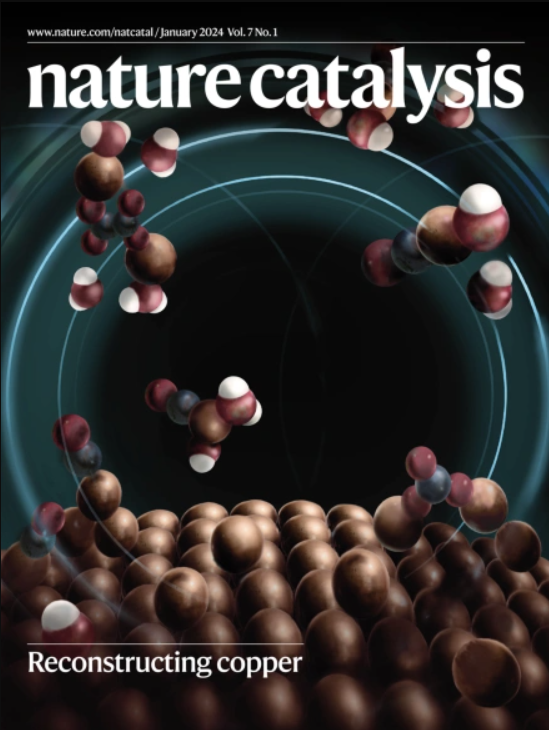SnSe nanosheets with Sn vacancies catalyse H2O2 production from water and oxygen at ambient conditions
IF 44.6
1区 化学
Q1 CHEMISTRY, PHYSICAL
引用次数: 0
Abstract
Hydrogen peroxide (H2O2) is a vital industrial chemical and sustainable energy carrier. However, achieving a simple, efficient and cost-effective synthesis under mild conditions remains an important challenge. Here we show that SnSe nanosheets with Sn vacancies can directly catalyse H2O2 production from H2O and O2 under ambient conditions, without additional energy inputs (for example, light and electricity), cocatalysts or sacrificial reagents. This approach achieves an optimal H2O2 production rate of ~2.6 mmol g−1 h−1 at 40 °C and maintains long-term stable production (~0.3 mmol l−1) in a continuous-flow reactor for over 50 h at room temperature. Experimental and theoretical analyses reveal that this unique thermocatalytic effect arises from a dynamic process involving Sn vacancy defect-induced sequential dissociation of H2O and activation of O2 molecules, along with reversible surface restructuring of the SnSe nanosheets to release H2O2. Our findings offer a notably simple, highly efficient and entirely green strategy for H2O2 production, with broader implications in other catalytic reactions involving water activation. H2O2 is a commodity chemical produced in industry via the anthraquinone process from H2 and O2. Now a heterogeneous catalysis approach is presented in which H2O2 is synthesized from H2O and O2 on defective SnSe nanosheets at ambient conditions.


具有Sn空位的SnSe纳米片在环境条件下催化水和氧生成H2O2
过氧化氢(H2O2)是一种重要的工业化学品和可持续能源载体。然而,在温和的条件下实现简单、高效和经济的合成仍然是一个重要的挑战。本研究表明,具有Sn空位的SnSe纳米片可以在环境条件下直接催化H2O和O2生成H2O2,而无需额外的能量输入(例如光和电)、助催化剂或牺牲试剂。该方法在40°C条件下,H2O2的最佳产率为~2.6 mmol g−1 h−1,并在室温下连续流反应器中保持50 h以上的长期稳定产率(~0.3 mmol l−1)。实验和理论分析表明,这种独特的热催化效应是由Sn空位缺陷引起的H2O的顺序解离和O2分子的活化,以及SnSe纳米片的可逆表面重组以释放H2O2的动态过程引起的。我们的研究结果提供了一种非常简单、高效和完全绿色的H2O2生产策略,对其他涉及水活化的催化反应具有更广泛的意义。
本文章由计算机程序翻译,如有差异,请以英文原文为准。
求助全文
约1分钟内获得全文
求助全文
来源期刊

Nature Catalysis
Chemical Engineering-Bioengineering
CiteScore
52.10
自引率
1.10%
发文量
140
期刊介绍:
Nature Catalysis serves as a platform for researchers across chemistry and related fields, focusing on homogeneous catalysis, heterogeneous catalysis, and biocatalysts, encompassing both fundamental and applied studies. With a particular emphasis on advancing sustainable industries and processes, the journal provides comprehensive coverage of catalysis research, appealing to scientists, engineers, and researchers in academia and industry.
Maintaining the high standards of the Nature brand, Nature Catalysis boasts a dedicated team of professional editors, rigorous peer-review processes, and swift publication times, ensuring editorial independence and quality. The journal publishes work spanning heterogeneous catalysis, homogeneous catalysis, and biocatalysis, covering areas such as catalytic synthesis, mechanisms, characterization, computational studies, nanoparticle catalysis, electrocatalysis, photocatalysis, environmental catalysis, asymmetric catalysis, and various forms of organocatalysis.
 求助内容:
求助内容: 应助结果提醒方式:
应助结果提醒方式:


